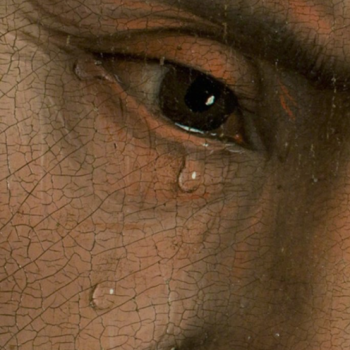In 1988 the Congregation for Divine worship approved a set of adaptations to the mass to be used in the Diocese of Zaire that might rightly be considered the most dramatic adaptations to the Latin Mass of the Catholic Church to date. The Roman Missal for the Dioceses of Zaire is a unique attempt at liturgical inculturation, but it is not one that has developed without controversy. The issues that surround its inception and implementation highlight many of the concerns that must accompany any attempt at liturgical inculturation. They also point to many of the specific issues related to being a community of faith in an African context. Some people view the Missal as going too far, and yet others don’t believe it goes far enough. Examining these issues gives a fascinating glimpse into the worshiping life of the Catholic Church and exploring how the Catholic Church will resolve them may very well be the key to understanding where the Church is going in the future.
What is inculturation
One of the greatest insights of the Second Vatican Council was that pluralism was desirable, in fact it is necessary. A communicative event is always contingent on both the hearer and the listener having a common set of symbols with which they can communicate, not only linguistically but also culturally. Both my fluency in English and my cultural formation in the United States make it easy for me to communicate in American contexts, however those who are not fluent in English and who come from different cultural backgrounds may find that communicating even the most basic of concepts to be difficult. If Christians are to take seriously the belief that all the baptized are called into full, active, and conscious participation in the body of Christ there must also be a recognition that the communication of the Gospel message must always be particularized into local contexts, cultures, and languages.In other words, the liturgy must not be foreign, but intimately proximate. There are many ways to go about adapting the liturgy for a particular culture, the main thing to remember is that a genuine inculturation occurs when rites soak up the culture around them in such a way that the liturgy itself might be said to be a cultural event.
What makes the The Roman Missal for the Dioceses of Zaire different?
The Roman Missal for the Dioceses of Zaire goes about its attempts to inculturate by allowing certain unique adaptations. They include the following changes:
- The Priest is dressed in the robes that would be used by a tribal priest
- The servers (all male) carry spears
- There is a new role introduced, that of the announcer (as one finds in African public functions)
- The celebrants and servers dance around the altar as a means of veneration
- There is an included invocation of the saints and ancestors
- The penitential rite is moved to after the Creed
- There is a sprinkling of Holy Water after the kiss of peace
- Pots of incense are used, and left burning during the general intercessions
- There is a dance accompanying a bringing of gifts for those in need
- There are some new prayers added that highlight key elements of the African cultural worldview (communal, non-dualistic, solidarity oriented)
- The lifting of hands accompanies prayers and responses to prayers
- People sit at the reading of the Gospel
- Places for the people to respond in the eucharistic prayer have been added
These changes are dramatically sudden when compared to the rate at which changes that have generally taken place in the Church in the past. Many people wonder what needs could cause such a radical shift in liturgical practice.
Is such adaptation necessary?
There are many critiques made of the The Roman Missal for the Dioceses of Zaire. More than I have the time to innumerate at the moment, but some common concerns are as follows.
- Isn’t the world global now?
- Do the people of Zaire live such radically different lives that they need such radical changes to the mass?
- Aren’t these changes a little contrived, true liturgical development should come out of organic development from the imposition from the intellectual elite.
- Is this such a radical departure from the Roman Missal that it ceases to have unity with the rest of the Church?
All of these concerns have their merits and do need to be addressed. I, however, support most of the changes, and would like to offer a bit of personal reflection in response.
In answer to the first critique I think it is important, when dealing with questions of globalization, to remember that the global is always interpreted by the local, this is particularly true in Africa where village life is a part of urban life in ways that it is not in the United States. As global changes occur they are alway implemented in culturally specific ways. The continent of Africa in particular has special concerns which I believe justify more radical adaptations.
In answer to the second question I would like to remind critics that the Christian communities in Africa have, in many cases, not been given the freedom to develop their own liturgies in the ways that western cultures have been able to adapt their liturgy over time. There are, in fact, some authentically African liturgical families, namely the Coptic and the Ethiopic. These rites however were not allowed to be practiced in much of Africa. The history of Christianity in Africa has been tied to imperialist domination and with it liturgical despotism. I believe the nature of the radical sins of the Church calls for more radical opportunities for adaptation today.
In answer to the third question my response would be that unity is not grounded in the words that are said as much as the life that people are brought into. The rite maintains the essential unity with both the theology and the ecclesiology of the rest of the Church.It is not a rogue mass that was created apart from the rest of the Church but one that was done in conversation with the rest of the Church. The adaptations made to the the mass in this instance are far less dramatic than many that have taken place in the Catholic Church in the last two thousand years. If this mass is such a radical departure from the Roman that it ceases to have unity with the rest of the Church, the Roman Mass itself could be seen as having departed so radically from the the meal instituted by Jesus that the Catholic Church itself has ceased to have union with Christ. I believe that the Church in the Congo remains firmly in union with the Catholic Church, which in turn remains firmly in union with Christ.
Finally I would like to add that the Church needs the Africans. By allowing them to express the unique genius they have in the liturgy, Africa can help teach and heal the Western world. Their cultural emphasis on community and solidarity offers a communal paradigm much more in line with the Gospel than western individualism. Secondly the African culture also offers an emphasis on the balance between the physical and the spiritual that may turn out to be a special gift to help the Church move beyond its platonic worldview. Finally there is an emphasis on the needs of a community as essential to the existence of an individual. This perspective of mutual dependence would help global Church a great deal.
Did the missal not go far enough?
There are also those who say that these changes did not go far enough. They argue that more radical changes would need to take place in order for the mass to be truly inculturated. One of the most radical suggestions that has been made is to allow the elements that are used to reflect more authentically African things. Wheat and grapes are not grown in Africa and some argue that elements like millet and palm wine might better adapt African liturgy to African culture.
I am hesitantly sympathetic to these suggestions. There has been some precedent to making changes in other sacramental elements at other points. For example, at one point anointing oils were required to be made with olive oil, which is also difficult to acquire in Africa and certain other regions. This restriction has been lifted to help accommodate the Church in areas where olive oil is expense. Changing the elements from wheat to millet would certainly make it easier for parishes to acquire the elements and using food and drink from the local culture would also help the symbolic importance of the eating of a meal to show through more strongly. However I do have concern about making these kinds of change. The symbols of bread and wine are grounded in Christ. Jesus himself is the source of the Eucharist and he instituted the Lord’s supper in a particular way and at a particular time. The particularity of the elements used in a certain sense reflects the Church’s belief in the incarnation. I think the Church has a great deal more reflection to do on this issue before I would be comfortable seeing other elements used.












